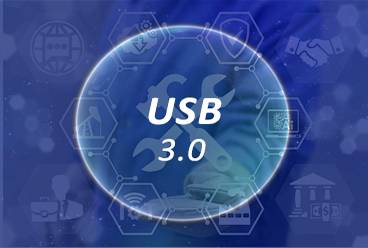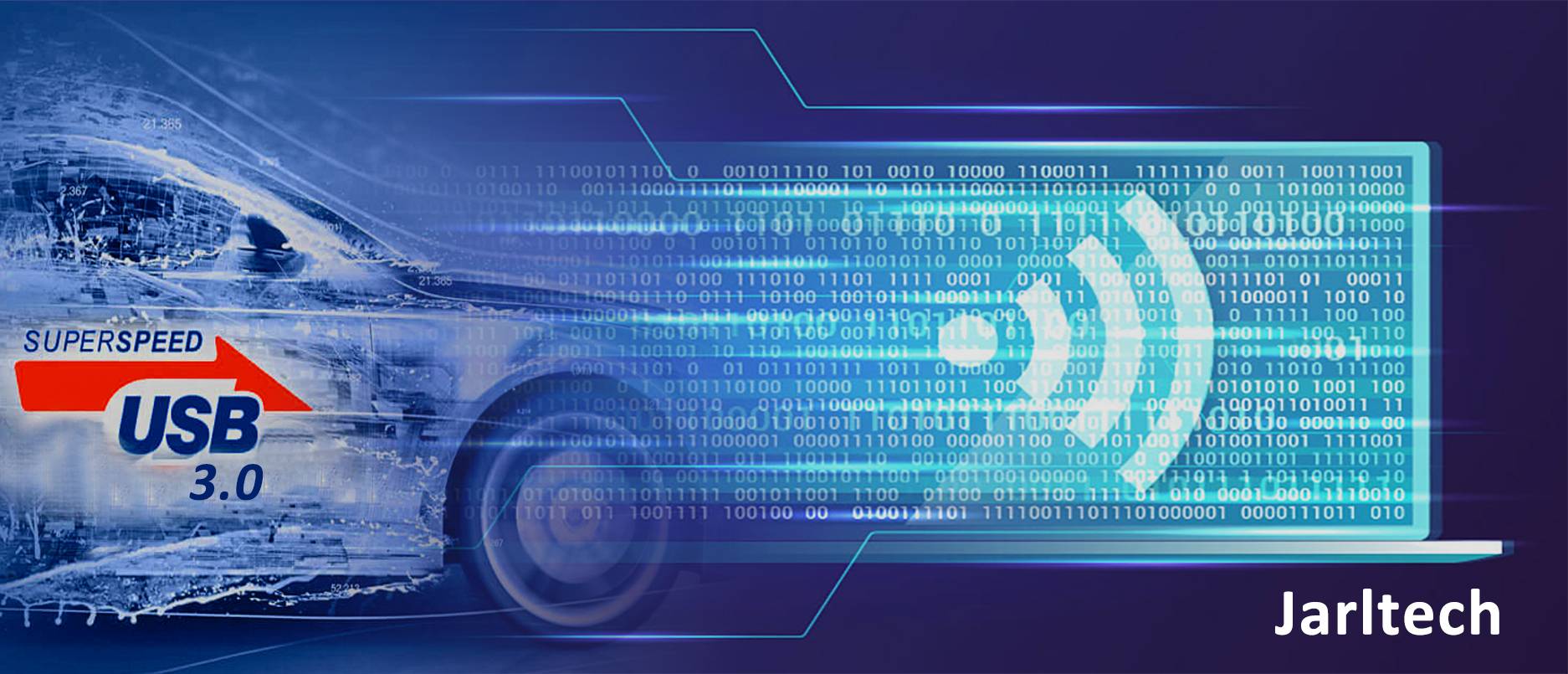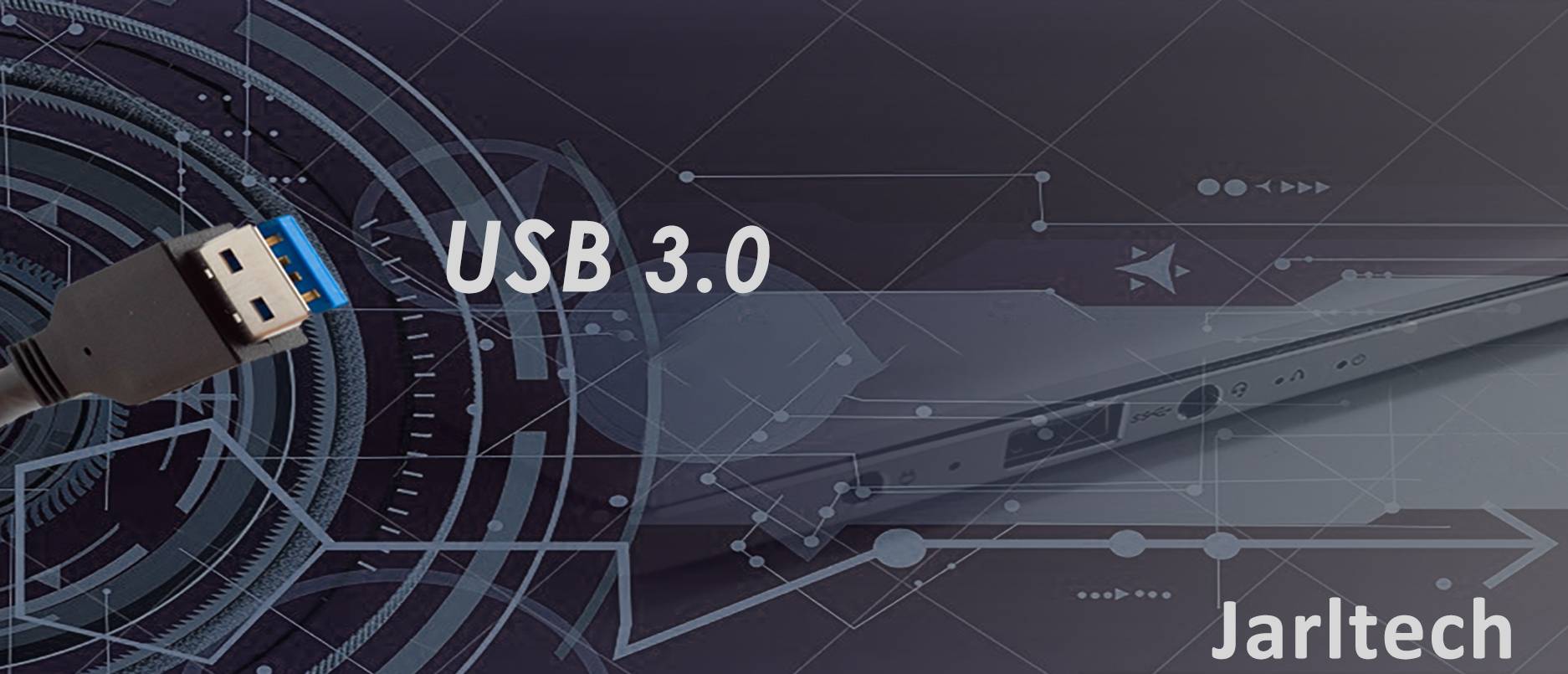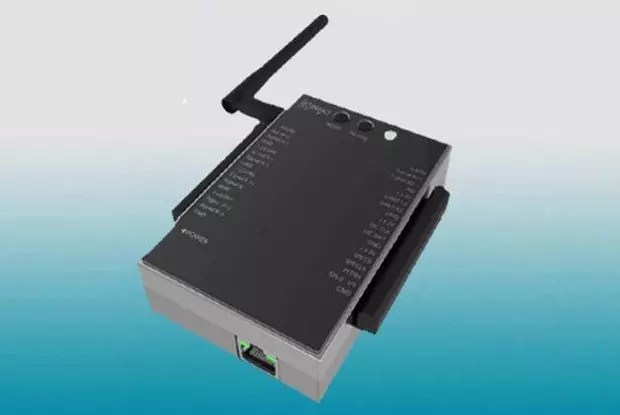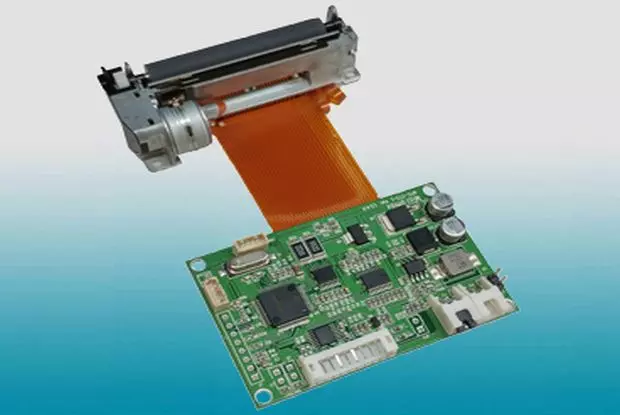SuperSpeed USB 3.0
Universal Connectivity for Advanced Consumer Applications
USB 3.0 maintains the familiar user interface of USB 2.0 while offering a significant increase in bandwidth. Jarltech's USB 3.0 solution features a dual bus architecture, integrating both USB 2.0 and the newly introduced SuperSpeed component.
An Overview of SuperSpeed USB 3.0
The Universal Serial Bus (USB) continues to be the dominant interface across PC, mobile, consumer electronics, and communication markets. For years, USB 2.0 has been the industry standard for PC connectivity, offering sufficient bandwidth for a range of application devices connected to a host computer, either directly or via hubs. However, the 480 Mbps peak bandwidth of USB 2.0 is no longer adequate to meet the growing demands of high-definition video, terabyte storage devices, high-resolution digital images, and multimedia-rich mobile phones.
The USB 3.0 specification ensures backward compatibility with USB 2.0, a crucial feature for consumer electronics. The design is intended to provide users with the same experience as a USB 2.0 interface while offering significantly enhanced bandwidth. USB 3.0 utilises a dual bus architecture, integrating both the USB 2.0 interface and a newly developed SuperSpeed component.
USB 3.0 Protocol
USB 3.0, also known as SuperSpeed, is a layered communication protocol consisting of a host, device, and SuperSpeed interconnect. It enables interoperability among devices from various vendors while maintaining backward compatibility with existing USB infrastructure, including device drivers and software interfaces. Designed to enhance PC architecture, USB 3.0 spans portable computers, business desktops, home environments, and device-to-device communications.
The SuperSpeed USB 3.0 protocol encompasses several key aspects, including
• The product offers a boosted bandwidth of up to 5 Gbps.
• Dual-simplex data transfers
• Backwards compatible
• The maximum bus current capacity has been enhanced.
• Improved Bus Power Management
• Optimized Power Management
USB 3.0 has been developed to achieve enhanced performance through several technical improvements. The most notable of these is the addition of a new differential pair alongside the existing USB 2.0 data bus. While USB 2.0 uses four wires (power, ground, and a pair for differential data), USB 3.0 introduces four additional wires and a ground signal, creating two more pairs of differential signals for receive and transmit. This results in a total of nine wires in the cables and connectors.
The additional two pairs are essential for meeting the SuperSpeed USB 3.0 bandwidth requirements. The signaling method has transitioned from continuous polling to asynchronous, though it remains host-directed. USB 3.0 also offers a bi-directional data interface, unlike the half-duplex design of USB 2.0, which restricts data flow to one direction at a time. Collectively, these upgrades achieve a ten-fold increase in theoretical bandwidth, enabling real-time transfer of large data volumes.
USB 3.0 introduces several enhancements for improved power efficiency. Key features include link-level power management, allowing either the host or device to initiate power-saving states during idle periods. The link layer can enter progressively lower power states when idle, reducing power consumption. Continuous device polling is eliminated, and broadcast packet transmission through hubs is removed. Additionally, devices can suspend individual functions or circuitry not in use, further conserving power.
USB's widespread adoption can be attributed to three key factors: its user-friendly design, the extensive presence of USB hardware in PCs and other consumer electronics, and the comprehensive software support from USB drivers integrated into all major operating systems. USB 3.0 builds on the foundation established by USB 2.0, enhancing performance to meet the demands of high-bandwidth applications that were previously constrained.
Further enhancements to performance include
• Optimized bulk transfer streaming for improved performance.
• Isochronous transfers with low-power link states between service intervals are to be implemented.
• Communicate latency tolerance to the host to optimize the USB interface.
A summary of the new features and benefits of USB 3.0
| USB 3.0 Feature | Enables |
|---|---|
| 5.0 Gbps peak bandwidth | The system enables the rapid transfer of large files, such as a 20GB HD movie, in under a minute. |
| Dual simplex connectivity | The new system offers faster synchronization and two-way communication. |
| Current delivery increased to 900mA | The product allows users to rapidly charge a wider range of USB-connected phones and personal electronic devices. |
| Interrupt driven protocol | The new model offers lower power usage and an extended battery life. |
Application
USB 3.0 is an ideal solution for a wide range of applications, including solid-state mass storage devices, video streaming and transfer, PC docking stations, multi-channel audio interfaces, high-resolution webcams and surveillance cameras, and video display solutions like DisplayLink USB graphics technology. Additionally, it facilitates connectivity for digital video and still cameras, external media devices such as Blu-ray players and external hard drives, and more. As the use of home media PCs and high-capacity external drives continues to grow, USB 3.0 provides a simple and efficient solution for transferring large media files, enhancing the consumer experience.
The increased bandwidth of USB 3.0 significantly enhances device performance, offering a superior user experience compared to USB 2.0. While USB 2.0 was unable to support high-resolution video due to its 480 Mbps limit, USB 3.0's 5 Gbps peak bandwidth enables the transmission of high-resolution video with reduced latency, resulting in a notable enhancement in video quality. For example, single-link DVI requires a throughput of nearly 2 Gbps, which USB 2.0 is unable to support. USB 3.0's capacity to deliver 5Gbps enables superior video solutions and is expected to facilitate the expansion of USB into new products and applications that USB 2.0 could not effectively support.
SuperSpeed USB 3.0 | High-Quality Self-Service Kiosk Solutions | Jarltech
Located in Taiwan since 1987, Jarltech International Inc. has been a developer and manufacturer of POS and Kiosk systems for restaurants, retail stores and supermarkets. Their main software and hardware products include, SuperSpeed USB 3.0, small business POS systems, self-service kiosks, smart card readers, Bluetooth thermal printers, embedded motherboards and all-in-one panel PCs, focusing on providing interactive kiosk solutions.
Leverage Jarltech’s 30+ years of expertise in developing innovative POS and Kiosk systems tailored for diverse business needs in restaurants, retail stores, and supermarkets. Our specialized solutions, encompassing IPC, Touch Monitor, Thermal Printer, and Smart Card Reader, are designed to elevate your business operations, ensuring seamless transactions and enhanced customer experiences.
Jarltech has been offering customers global B2B solutions with Jarltech’s POS and Kiosk Systems since 1987, both with advanced technology and 37 years of experience, Jarltech ensures each customer's demands are met.

